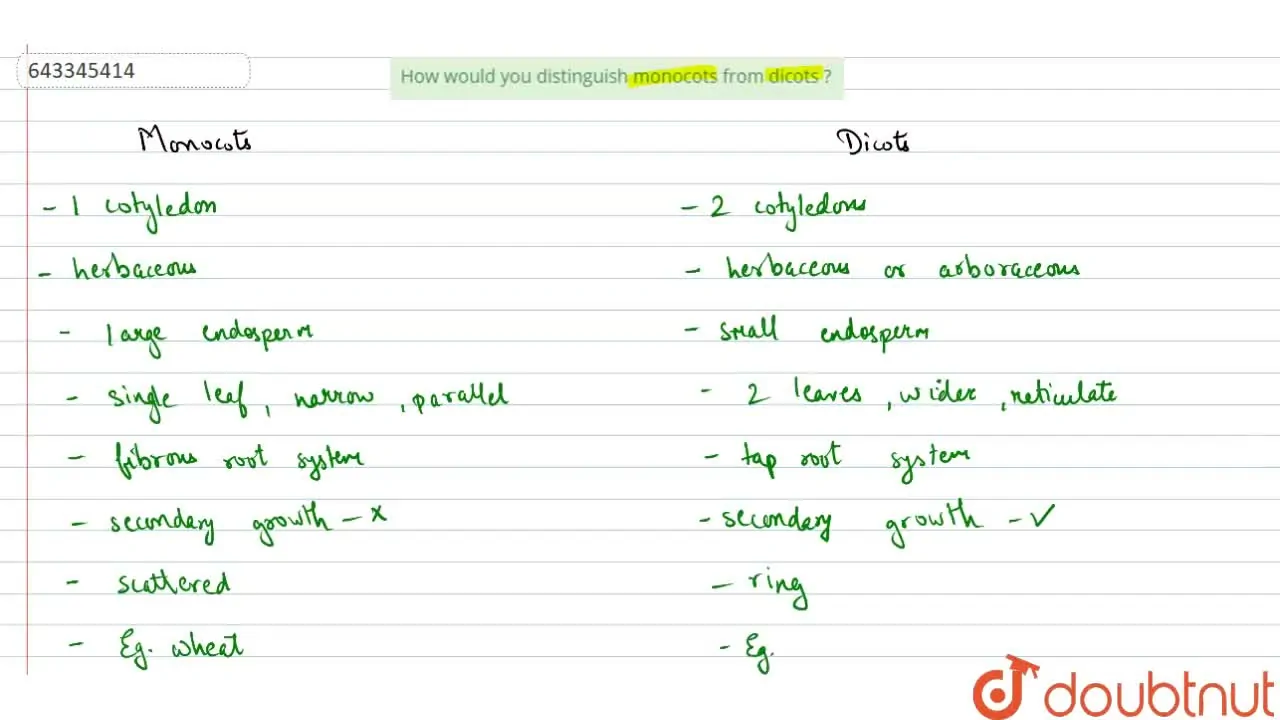How would you distinguish monocots from dicots ?
Step by step video & image solution for How would you distinguish monocots from dicots ? by Biology experts to help you in doubts & scoring excellent marks in Class 11 exams.
Related Playlists
- BOOK - ICSECHAPTER - PLANT KINGDOM EXERCISE - Ncert Exercises (Differentiate Between )6videos
PLANT KINGDOM
- BOOK - ICSECHAPTER - PLANT KINGDOM EXERCISE - REVIEW QUESTIONS (MULTIPLE CHOICE QUESTIONS)62videos
PLANT KINGDOM
- BOOK - ICSECHAPTER - PLANT KINGDOM EXERCISE - Test Your Progress (HOTS)4videos
PLANT KINGDOM
- BOOK - ICSECHAPTER - PLANT GROWTH AND DEVELOPMENTEXERCISE - NCERT EXERCISES WITH ANSWERS (DIFFERENTIATE BETWEEN)11videos
PLANT GROWTH AND DEVELOPMENT
- BOOK - ICSECHAPTER - QUESTION PAPER -BIOLOGYEXERCISE - PART -II (Section -C)6videos
QUESTION PAPER -BIOLOGY
Similar Questions
How would you distinguish a dicot leaf from a monocot leaf by external observations only ?
View SolutionList two characteristics that distinguish monocots from dicots.
View SolutionHow would you distinguish Archaea from Eubacteria ?
View SolutionHow will you distinguish pentane from 1-pentene ?
View SolutionHow would you distinguish the vascular bundle of a monocot stem from that of a dicot stem?
View SolutionHow would you distinguish between oxalic acid and glucose by one chemical test.
View SolutionHow would you distinguish between oxalic acid and glucose by one chemical test.
View SolutionHow would you distinguish between oxalic acid and glucose by one chemical test.
View SolutionHow would you distinguish experimentally between an alcohol and a carboxylic acid?
View SolutionHow will you distinguish a phylloclade from a phyllode ?
View Solution


